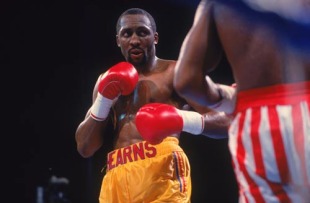- June 3 down the years
The birth of a clay-court genius

1986
Rafael Nadal was born in Majorca. The great clay court monster of tennis, he made himself into rather more than that in 2008, when he took the Wimbledon title from Roger Federer (July 6) and went on to beat him at the Australian Open (February 1).
So he was now conquering the 'greatest of all time' on the greatest's own surfaces. He'd already tamed him on clay. In 2008, he beat Federer in the French Open final for the third year in a row (June 8), this time more emphatically than ever, humiliating him for the loss of only four games. Impossible to believe Federer would have won the title the following year if Nadal had been fit to defend it. As it was, that was the chink in Nadal's armour: his body's had a habit of letting him down.
Heavily muscled even as a boy (he was French champion at 19), he's had major foot and knee injuries which threatened to end his career before it reached its prime. When he was fit enough to step onto a court, he had overwhelming weapons. The ability to hit hard on both wings and to do it over and over; above all, the mental strength that crushed the world number one.
Nadal's third win over Federer at the French gave him the title for the fourth year in a row, and he was Olympic champion in 2008, which was very much his great year.
He returned to win the Roland Garros title in 2010, and would hold a monopoly on it for the next three years as well, denying Federer again in 2011, Novak Djokovic in 2012 and compatriot David Ferrer in 2013.
There would also be another Wimbledon title in 2010 before he triumphed in Flushing Meadows again the same year - the sight of his most recent grand slam triumph in 2013. It was the 10th title of a remarkable comeback year following his latest injury exile of seven months out.
1995
The injury which overshadowed a rugby World Cup. After only two minutes of the match against Tonga in South Africa, Ivory Coast winger Max Brito caught a high ball and ran out of defence. He took a tackle, but then found himself trapped at the bottom of a maul. When everyone got off, Brito didn't move. He was stretchered off and taken to hospital, where an operation couldn't repair the damage to his spine, and he was left paralysed below the neck. Years later, he was still feeling suicidal and there was criticism of the way he'd been largely forgotten by the rugby world.
On the same day, Irish referee David McHugh sent off three players in the same game. Hosts South Africa lost hooker James Dalton, but Canada had to do without Rod Snow and their captain Gareth Rees. Already underdogs, they couldn't compete against the extra man and lost 20-0. No.8 Adriaan Richter scored both Springbok tries.
Still in this World Cup, France and Scotland met to decide who would win their group and avoid New Zealand in the quarter-finals. The Scots led 13-3 at half-time and were 19-15 ahead in the third minute of injury time. Then France sent the ball along the line, and a tackle by Scott Hastings couldn't stop Émile Ntamack crossing the line. Thierry Lacroix's superfluous conversion made the final score 22-19. He kicked five penalties to four by Gavin Hastings (who hit a post with another), and Scotland had to face Jonah Lomu on June 11.

1991
Tommy Hearns regained a version of the world light-heavyweight title. He'd won the WBC edition by outclassing Britain's Dennis Andries, then won the WBO super-middleweight belt in 1990. Now he moved back up to take on WBA light-heavyweight champion Virgil Hill, who was unbeaten as a professional. After winning the title in 1987, Hill made 11 successful defences, but almost all of them against inexperienced nonentities. Stepping up in class tonight, he gave Hearns a fight before losing a close but unanimous decision. Hearns lost his first defence to Iran Barkley, who'd shocked him in a world middleweight fight on June 61988. When Barkley vacated the title, Hill regained it and made another ten successful defences.
1984
American golfer Patty Sheehan shot 272, lowering the tournament record by three shots, to retain the LPGA title. She won the same Major for the third time in 1993.
1967
Tamás Darnyi was born in Budapest. Before Michael Phelps (born June 30 1985), this was arguably the best all-round swimmer of all time. When he retained both individual medley titles at the 1992 Olympics, he was unbeaten in more than eight years, which included winning both events at the World Championships in 1986 and 1991 and three European titles in each, plus the 200 metres butterfly at the Europeans in 1989. In 1993 he won the European 400 IM for the fourth time. He set three world records in each of the medley events. All this despite being blind in one eye.
1982
Yelena Isinbayeva was born in the USSR. Before her shock failure at the 2009 World Championships, she was unbeatable in the pole vault. She'd set her 16th world record that year and was the first woman to go over five metres (July 22 2005). In 2008 she became the only woman to retain the Olympic title. She was also world champion twice and European champion in 2006, as well as winning three indoor titles at the World Championships and another at the Europeans.

